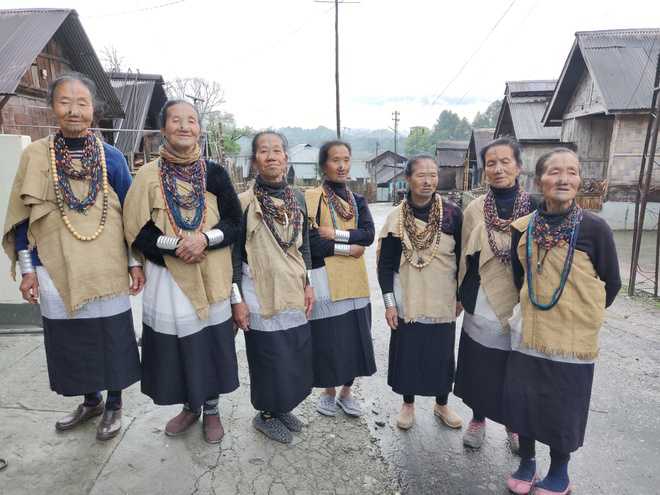In the land of the Apatanis
Rashmi Gopal Rao
To say that the largest state in the Northeast of India, Arunachal Pradesh is a travellers’ delight is no understatement. One of the most fascinating states of India, Arunachal Pradesh is the land of lofty mountains, dense forests, pristine landscapes and home to a large tribal population. Arguably one of the most beautiful sights in the state is the picturesque Ziro valley located in lower Subansiri district. Nestled in the lap of nature, it is a land covered with large expanses of green paddy fields, formidable mountains and charming villages. Located about 120 km from the capital city Itanagar, Ziro town is the district headquarters and consists of Hapoli (or New Ziro) in the south and the Old Ziro in the north.
One of the most beguiling aspects of the Ziro valley is that it is home to the distinctive Apatani tribe who are an ethnic group belonging to the eastern Himalayas. Known for their large black nose plugs and facial tattoos, the Apatani tribals are non-nomadic and live in and around the valley. According to some senior members of the tribe, Apatani women were known to be very beautiful, and hence were often taken away by the male members of other tribes. Hence, the men of Apatani tribe forced young girls to wear nose plugs and adorn facial tattoos so that they looked less appealing.
Apatanis, whose main occupation is agriculture, wear long chains made up of beads and stones like turquoise and adorn traditional skirts called “gale”. The latter are usually monochrome and are hand-woven lending them an elegant look. They celebrate festivals like Myoko and Dree. The Hong village in Ziro valley is a perfect place to gain insight into lifestyle, traditions and culture of the Apatanis. Yet another unique feature of this tribe is their extraordinary way of wetland cultivation.
The entire landscape of Ziro is known for its sprawling paddy fields that are found both on flat land as well as hillocks where steps are carved out and terracing farming is practised. The Apatanis who possess rich knowledge about the local ecosystem follow conventional methods of farming and do not use machines or animals. Apart from this, the water used for rice cultivation is used to rear fish. Common carp fish is the species that is bred. The breeding happens simultaneously once the seedlings of the paddy are transplanted. The harvest of both rice and fish happen in quick succession. This model is seen as an excellent and optimum way to utilise the available natural resources. These techniques of sustainable farming ensure that the Apatanis maintain a symbiotic and harmonious relationship with their land, making the coexistence highly beneficial for the overall ecosystem of the valley. All these distinctions at Ziro make it a proposed Unesco World Heritage Site.
Ziro is also home to the Sidheswarnath Temple that houses one of the largest Shivalingas unearthed in the recent times. Situated near Hapoli, the idol is as tall as 25 feet. The local vegetable market in Ziro is a great idea to soak in the native culture and sample local produce including greens, bamboo shoots and other vegetables.
You can also visit the district museum in Ziro that is a treasure house of tribal artefacts. On display are various kinds of baskets, items of daily use like combs, lamps, jewellery, traditional costumes, tools, etc. The collection is vast and extremely engaging. The Crafts emporium is yet another insightful place where one can witness carpets and fabric being hand woven on looms and traditional cane baskets being made. There is an art and metal fabrication section, too. There is a retail store on the premises, where one can pick up some authentic souvenirs of Arunachal.









